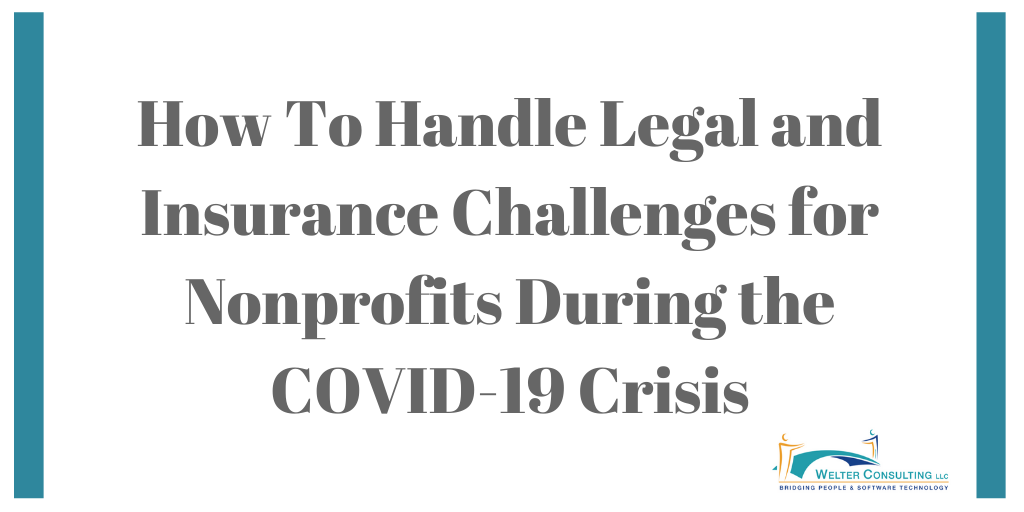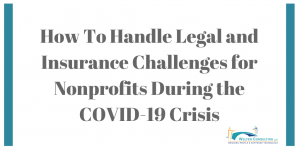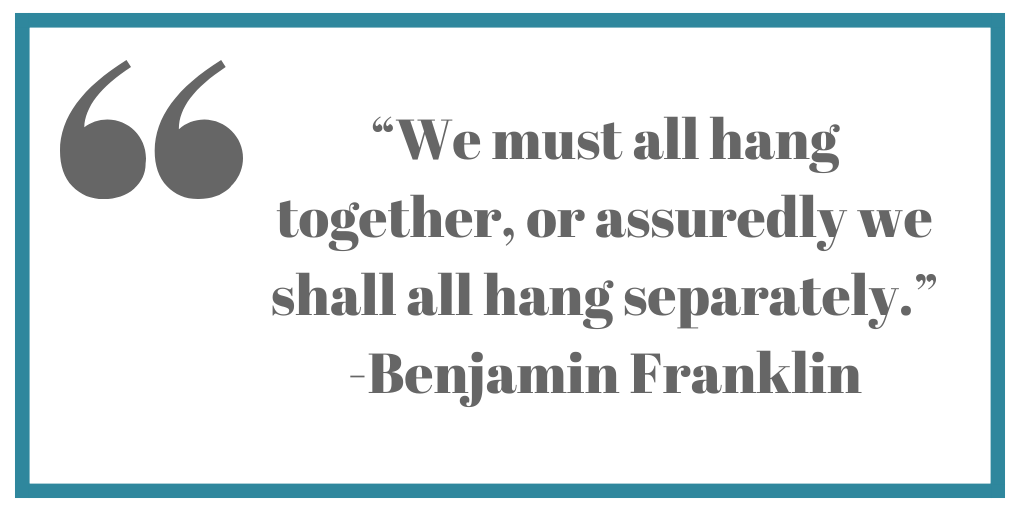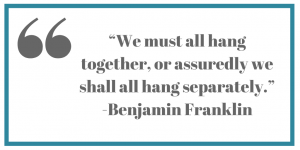
 During these unprecedented times, with most of the nation avoiding gatherings and crowds and staying home to prevent spreading the novel coronavirus (COVID-19), nonprofits face increasing challenges. Among these challenges are the legal and insurance ramifications of shutting down offices, providing resources for those directly affected by the virus, and ensuring that your volunteers and employees are covered as much as possible when resources are strained.
During these unprecedented times, with most of the nation avoiding gatherings and crowds and staying home to prevent spreading the novel coronavirus (COVID-19), nonprofits face increasing challenges. Among these challenges are the legal and insurance ramifications of shutting down offices, providing resources for those directly affected by the virus, and ensuring that your volunteers and employees are covered as much as possible when resources are strained.
Nonprofit Leaders Must Rise to the Challenge
Nonprofit leaders must rise to these challenges and lead by example. Remain hopeful, positive, and cautiously optimistic without promising anything. No one can predict, for example, when the restrictions on gatherings will be removed; for now, we must live one day at a time, dealing with what is before us.
Accounting and Financial Issues to Consider Accruals &/or Notes in F/S
Right now, with so many families facing the loss of income created by businesses shuttering and events canceled, donations are likely to slow to a trickle. Consider what your organization may need to accrue or disclose concerning losses/additional expenses or expectations about future revenue streams.
- Stay on top of employee vacation time as well as sick day accrual (or PTO balance if combined). You’ll need to track these hours/days carefully to know what employees can and cannot use. Sick days may need to be used in a short period if someone becomes ill with COVID-19. Prepare for lengthy absences in the event staff come down with the virus or must quarantine due to contact with someone who has the virus. Make sure your financial statements to management, board, funders, monitors and auditors reflect the correct liability for this instead of waiting until the end of the fiscal year, as you may have to pay this out sooner rather than later.
- The Family Medical Leave Act (FMLA) may provide relief for some employees as additional paid time off after they run out of vacation and sick time (PTO). According to Time Magazine, an expanded Family and Medical Leave Act passed allowing for government employees with less than 500 employees who have worked for these companies for at least 30 days an additional 10 weeks of emergency paid leave to care for children whose schools or daycare facilities were closed.
- A new congressional law passed yesterday for additional paid leave for employers/employees affected by COVID-19 for companies with fewer than 500 employees. This law will grant employees up to 14 days of sick leave at a normal pay rate to either quarantine or to seek a COVID-19 diagnosis or preventive care for themselves. If an employee is caring for a family member that has to quarantine, seek diagnosis or preventative care for COVID-19 the employee will be granted up to 14 days of paid leave after taking 10 days of unpaid leave, at no less than two-thirds of their normal pay rate (up to $200 per day, and $10,000 in total).
- Full-time employees will be entitled to 80 hours of paid sick time. Part-time employees will be entitled to the number of hours they normally work in a two-week period.
- Health care workers, first responders, quarantined workers, or those who were caring for afflicted family members, will not be Employers with less than 50 employees or more than 500 employees are also excluded.
- Companies will have to front the costs for paid sick leave wages provided to employees who must quarantine because they are sick with COVID-19 or are trying to obtain a diagnosis; companies will be reimbursed up to $511 per employee per day. For paid sick leave wages provided to employees caring for loved ones, employers will be reimbursed up to $200 per worker per day. Self-employed individuals are also eligible for the reimbursable tax credits for their lost wages effected by COVID-19.
- Make sure to track this leave as a separate item so you can easily provide documentation to the government on hours/amounts paid to each employee to later claim reimbursement for both unpaid and paid leave related to COVID-19. Financial disclosures and accrual of these amounts should be considered before issuing financial statements to any of your stakeholders.
Consider Your Volunteers & Vendors
Do volunteers sign a waiver or an agreement noting that they aren’t due any compensation? Do they acknowledge they aren’t employees and therefore aren’t due for worker’s compensation or other insurance? Take steps to protect your organization against inappropriate claims. Most volunteers are treated differently than employees, but not always. It’s essential to know the distinction and what, if any, legal protections your organization has put into place to avoid excess workers comp claims.
If you use contractors to perform work at your organization, identify if you have a contract with that vendor and what is stated in the contract. If you have guaranteed a certain # of hours or pay to a certain contractor during this time, you may be responsible for making payments to that vendor even if they are unable to perform the work (i.e.: customer facing). Talk to this vendor ahead of time about any contracts that state a certain # of hours or dollars are guaranteed to them to determine if you can find a solution that works for both parties.
Should You Shut Down or Find Alternative Ways to Work?
If your local or state government urges everyone to remain at home, you may need to shut down or find alternative ways for employees to continue working. Some may still need to go into work, especially if your organization provides an essential service. For example, a community food pantry may be needed more than ever to keep its doors open. You’ll need to weigh all of the risks involved, talk to your insurance companies and legal counsel, and determine for yourself the risks of keeping your doors open.
Determine now who is essential (must come to the physical office location) and who may telecommute. As long as you do not show any implicit or explicit bias in the decision of who can work from home and who cannot, your organization should be fine with the legal ramifications.
Establish communication channels with everyone so that they understand your organization intends to keep them employed. Phone or message everyone; check in frequently. People are unnerved by the changes to their lives, and having a personal connection with their employer can go a long way to calming their nerves.
- What if you need to reduce staff? Some organizations may be faced with this unpleasant but necessary choice. Hourly workers can receive FMLA paid or unpaid leave, or you can reduce their hours, so they continue to have some income. If you decide to reduce hours for your employees and they do the same tasks as another employee, then look into the possibility of using job share in your state (compensation for hours worked by your org and partial unemployment compensation for hours not worked which are shared with another employee from the state).
- What if My Employees Work with the Public? OSHA requires that employers provide a safe workplace for their employees. That’s difficult to do now with a virus at large. If you do need employees to come to work, and they must work with the public, take extra measures to ensure their safety. Provide protective gear, disinfectant, and requirements for social distancing.
Cancelling, Rescheduling or Moving Events Online Due to Coronavirus
When the government asked everyone to eliminate events or gatherings of 10 or more people to limit exposure to COVID-19, it put many organizations into a quandary. Many nonprofits host conferences and events that attract hundreds, if not thousands of people. Some host public events to share information and engage the community in their cause. All of this must come to a halt now for the greater good.
But your organization may be left holding contracts with multiple vendors: hotels, caterers, exhibit venues, and more. What are your rights and responsibilities?
- If you must cancel events, make calls to the vendors providing event services. Many organizations have been surprised by their generosity. Some are offering a full refund, while others are issuing vouchers for services to cover future events. A few are waiving fees, penalties, and payments until the crisis is over. All these gestures can offset financial worries for nonprofits. If a vendor is unwilling to work with you, then read through that contract to understand what rights and responsibilities you have to that vendor. You may need to consult with an attorney to understand all the nuances of the contract.
- If you have event insurance, understand what is covered under that policy. Event insurance used to be the go-to for nonprofits who worried about cancellations. For example, hosting a conference in the northeast during the winter offered cheaper airfare and hotel fees, but unexpected snowstorms might derail the event. Event insurance was used to cover losses in the event an act of nature forced the event to be canceled. Some insurers have stopped offering event insurance altogether due to obvious reasons. If you have it, and it covers events canceled due to COVID-19, you can take advantage of it to cover your losses. If not, do not rely upon coverage to plan events. Postpone them until the crisis is over.
- Move events online! Most content from speakers, program participants and event sessions can lend themselves to virtual events. Consider the pros, cons, and costs of moving the event online. For many, there may be significant benefits to offering one speaker per week virtually instead of the ten scheduled for an in-person all-day event. You can leverage the weekly teleseminar and send emails to constituents and participants to remind them to attend, use the transcripts for future marketing and communications, and remain in contact with everyone using virtual technology.
Nonprofit Insurance and What It Might Cover
Now is a great time to call your insurance company and discuss what your policies cover and what they do not. The overview below offers a big picture look, but your specific policy may differ, so it’s always best to speak directly with your insurance agent regarding coverage.
The typical nonprofit organization holds several insurance policies. These may include:
Workers Compensation
Washington state plans to have coverage for unemployment. Keep an eye on state-specific news to see how this shapes up. Workers Compensation policies and Negligence claims right now are an unknown. If people are forced to work with the public, can they sue your organization if it didn’t take “correct” measures to prevent contact that leads to COVID-19? No one knows the answer to this right now.
Unemployment Insurance
Washington state has decided to allow temporary loss of employment for individuals due to COVID-19 to be covered under unemployment during the time they are not able to work at your organization. Job Share is another option if you are cutting hours for your employees during this time as well; unemployment insurance will pick up the unemployment amounts related to the lost hours if sharing a job with a similar employee at the organization.
Property and Business Insurance
Among these three types of insurance, many are looking at their Property policy and thinking, “Ah, business interruption – that must cover us!” But it doesn’t. Business interruption insurance typically covers situations such as fire or flood that involve physical damage to the property itself. It doesn’t cover forced closures due to epidemics.
Umbrella Policies
An umbrella policy is often used as a gap or “umbrella” sheltering anything and everything in between various insurance policies. Again, it may or may not cover some elements of the current situation, so check with your carrier.
The bad news is that infectious diseases aren’t covered by any insurance (except health insurance for the individual). The size and scope of the COVID-19 epidemic are unprecedented in modern times. The last time the nation deal with massive upheavals due to a virus was the 1918 Spanish Flu pandemic, but that was during a time when even large companies had relatively little insurance compared with today’s businesses. Nonprofits are navigating uncharted waters.
Now is the time to talk to your insurance company about future policies too. We’re all learning from this event that even with the most thoughtful coverage, not every situation can be accounted for nor every event covered. COVID-19 forces us all to consider alternatives to business as usual.
Who would have thought a virus would spark such changes?
If you need any guidance or assistance during these times, Welter Consulting is here for you. We can be reached by phone (206-605-3113) or through our website.






Recent Comments